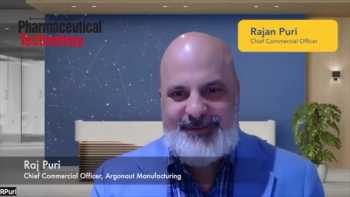
- Pharmaceutical Technology-08-01-2011
- Volume 2011 Supplement
- Issue 4
Standing Out in the Crowd
Supplier differentiation is increasingly important in the highly competitive arena of pharmaceutical outsourcing.
The outlook for pharmaceutical outsourcing, as evaluated by the PharmSource—Pharmaceutical Technology annual outsourcing survey, is generally positive but with caution. Although bio/pharmaceutical companies report a likelihood to increase their spending on outsourced services, competition for available business is intense. As contract-service providers work harder for new business opportunities, they must find ways to differentiate themselves.
Patricia Van Anrum
That task of differentiation is certainly not unique to the pharmaceutical outsourcing arena. Harvard Business School professor Michael Porter and leading expert on competition and strategy introduced more than 25 years ago in his book, Competitive Advantage, the activity-based view of a firm and the concept of the value chain as a general framework for thinking strategically about the activities involved in any business and assessing their relative cost and role in differentiation. In his earlier book, Competitive Strategy, Porter put forth a framework for analyzing industries and competitors. In these works, he described three generic strategies for achieving sustainable competitive advantage: cost leadership, differentiation, and focus. Cost leadership and differentiation strategies seek competitive advantage in a broad range of industry segments while focus strategies seek to achieve cost advantage or differentiation in a narrow segment (1, 2). The challenge for any firm is to decide what type of competitive advantage to pursue and how to achieve that differentiation.
So what is competitive advantage in the pharmaceutical outsourcing arena? Obviously, there is no simple answer, but in this year's Outsourcing Resources supplement, we seek to examine some of the issues at play and specific approaches used to create and sustain competitive advantage.
Fundamental to any strategy is an understanding of the business conditions and trends affecting the industry in which a company operates. Jim Miller, president of PharmSource Information Services and contributing editor to Pharmaceutical Technology, provides insight into pharmaceutical outsourcing from the perspectives of bio/pharmaceutical companies and contract-service providers. The PharmSource—Pharmaceutical Technology annual outsourcing survey evaluates business conditions and the factors that are influencing demand for contract services (see "
Amidst these conditions, we explore how contract-service providers can achieve competitive advantage by looking at the drivers that influence customers' perceptions of contract-service providers overall and in certain segments (see "
As the level and complexity of outsourcing increases, bio/pharmaceutical companies speak about how project management is a valued competency of a contract-service provider not only in meeting its obligations, but also in working with other service providers. To illustrate, we offer a case study of a cross-functional supplier integration model (see "
Part of the task in developing a sustainable competitive advantage is to understand not only what customers value now, but what they will in the future. As bio/pharmaceutical companies begin to adapt quality by design (QbD) in their drug-development and manufacturing efforts, will competency in QbD become equally important for contract-service providers? We gain perspectives from both sides of this issue. Senior executives from Pfizer offer insight on the company's experience with QbD (see "
Also in this issue, Avantor shares its experience in a pilot of the shared audit process of Rx–360, the international pharmaceutical supply-chain consortium (see "
Patricia Van Anrum is a senior editor of Pharmaceutical Technology,
References
1. M.E. Porter, Competitive Advantage: Creating and Sustaining Superior Performance (Free Press, 1st ed., New York, 1985).
2. M.E. Porter, Competitive Strategy: Techniques for Analyzing Industries and Competitors (Free Press, 1st ed., New York, 1980).
Articles in this issue
over 14 years ago
Healthy Outlook for Pharma Servicesover 14 years ago
Outsourced Manufacturing Operationsover 14 years ago
A Pharma Manufacturer's View of Quality by Designover 14 years ago
Customer Drivers Influencing Supplier Differentiationover 14 years ago
Evaluating QbD's Impact on the Outsourced RelationshipNewsletter
Get the essential updates shaping the future of pharma manufacturing and compliance—subscribe today to Pharmaceutical Technology and never miss a breakthrough.




